32 results
Common Core RL.11-12.5 videos

Free Common Core Activity for Plot Structure, Theme, and Tone in a Movie Trailer
The provided FREE Common Core rigorous activity explores the development of plot structure, tone, theme, and character development in a popular movie trailer from 2014. The activities are tied to the Common Core standards RL2, RL3, RL4, RL5, SL2, and SL3. The activity focus on the analysis of how authors develop plot structure (foreshadowing, flashback, suspense, humor, and mystery), tone, theme, and complex characters in a movie trailer. The activity includes a teacher answer key to assist you
Grades:
6th - 12th
Types:
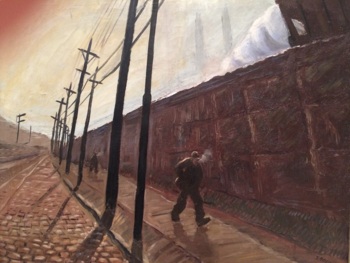
BUNDLE: TEN AMERICAN FILMS
YEARLONG, 297-page bundleIncludesLearning Objectives * Film Characters and Casts * Multiple-Choice Examinations Essay Examinations * Grading Rubrics * Answer Keys * Student Film GuidesActivity: Creating Film Posters * Activity: Writing a Ballad * Activity: Filming a SceneActivity: Relevant Social Issues * Fiction Writing: A Horror Story * Writing PromptsElements of Gothic Film * Media: Film Summary * Keys to Film Unit AnalysisActivity: Researching the Modern Period * Activity: Student SolutionsA
Subjects:
Grades:
9th - 12th
Types:
CCSS:
13:28
Differentiation and Note-taking | ELA Professional Development Course
Learn about differentiation and how to assign various note-taking activities in your high school English class. This is a section of a professional development course created by a high school English teacher. Bonus file includes assignments and handouts reviewed in the video screencast, which has a video of the presenter speaking. Running time: 13 minutes and 29 seconds. This course is not eligible for a professional development certificate unless your district administration or state approves
Subjects:
Grades:
9th - 12th, Staff
Types:
CCSS:
Also included in: PD for Secondary ELA Teachers: Easy, Exciting, and Excellent Teaching
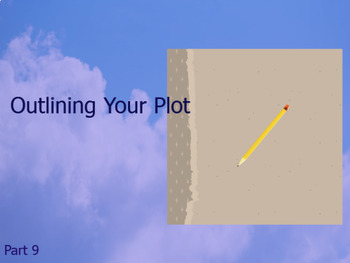
Outlining Your Plot, 9
Part 9, Outlining Your Plot detail the lists and graphs you make to outline your plot. The lists include the characters: protagonist, antagonist, their allies, and the measurable qualities of every character. The lists also include the settings and any important prop, and their measurable qualities. The graphs are to give a visual of the meetings of the characters with props at important settings that convey the forces showing the convergences. Also, there is an example of how the same story-lin
Subjects:
Grades:
11th - 12th, Higher Education, Adult Education
CCSS:
Also included in: Outline Your Story or Script: The Complete Plot How-to Course
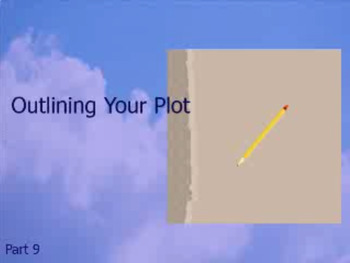
Outlining Your Plot, Plot.9
Part 9, Outlining Your Script details how to outline your story or script, both as lists of the qualities of character, props, and settings, and as a graph of convergences. It also discusses how the same story-line with the same characters can have different interpretations or have a twist added by analyzing what forces the characters convey.
Subjects:
Grades:
11th - 12th, Higher Education, Adult Education
CCSS:
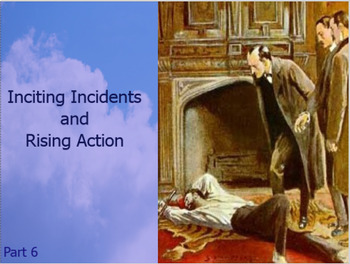
Inciting Incidents and Rising Action, Plot.6
Part 6, Inciting Incident and Rising Action defines what an inciting incident is and what rising action is. It explains how they work through the interplay of forces conveyed by the protagonist and their allies and antagonist and their cohorts as well as the meetings between protagonist forces and antagonist forces. It also explains how different forms of excitement, such as a sense of betrayal or suspense, is generated through the convergence of positive and negative forces as they are conveyed
Subjects:
Grades:
11th - 12th, Higher Education, Adult Education
Types:
CCSS:
Also included in: Outline Your Story or Script: The Complete Plot How-to Course
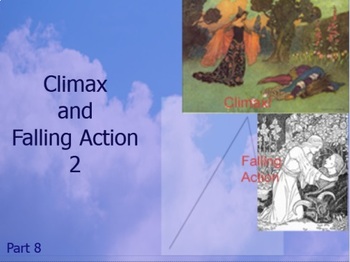
Climax and Falling Action, Plot.8.2
Part 8, Climax and Falling Action 2, uses examples to further explain the workings of the climax and the falling action of stories and scripts. It details how information, props, and settings can all convey important forces that when converging with the protagonist and the antagonist empower whichever character they are allied with and so contribute to the transformation of the main characters. Students will understand climaxes and falling action in a new, more precise way which will help them
Subjects:
Grades:
11th - 12th, Higher Education, Adult Education
Types:
CCSS:
Also included in: Outline Your Story or Script: The Complete Plot How-to Course

Critical Perspectives in English Literature | ELA Analysis Unit | POWERPOINT
A detailed illustration of the following critical perspectives to literature;1. Gender/Feminist 2. Social Class/Marxist3. Archetypal4. Psychological and PsychoanalyticalThis 50+ slide PowerPoint is the perfect accompaniment for any Year 11 or 12 English students looking to improve the complexity and sophistication of their text analysis.Teachers can work through the unit with students or assign them as preparation before novel or film studies, or exams. All of our units are suitable for Distan
Grades:
10th - 12th, Higher Education
Types:
CCSS:
Also included in: English Literature ELA Growing Bundle | PowerPoints, PDF & Google Units
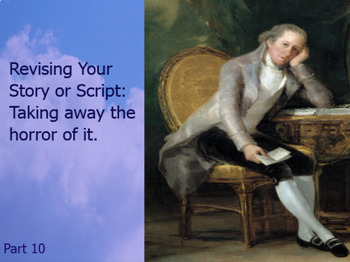
Revising Your Story or Script: Taking away the horror of it, Plot.10
"Revising Your Story or Script: Taking away the horror of it" is the tenth and last part of "How to Outline Your Story or Script." It details what to look for to make sure your story has a climax and that the climax works properly, how to check the story builds in excitement properly, and how to make sure character interactions are believable. It also discusses analyzing books and films as plot structures of symbolic forces conveyed by characters, props, and settings.
Subjects:
Grades:
11th - 12th, Higher Education, Adult Education
CCSS:
Also included in: Outline Your Story or Script: The Complete Plot How-to Course
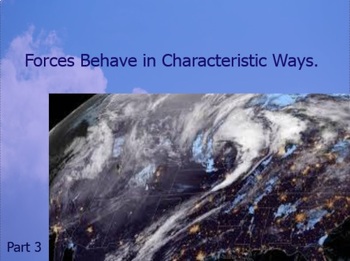
Forces Behave in Characteristic Ways, Plot.3
Part 3, Forces Behavior in Characteristic Ways details how the study of forces defines positive and negative behavior. The lesson shows that by interpreting these behaviors metaphorically through cultural or personal associations you can give your protagonist the positive behaviors and your antagonist the negative behaviors.
Subjects:
Grades:
11th - 12th, Higher Education, Adult Education
CCSS:
Also included in: Outline Your Story or Script: The Complete Plot How-to Course
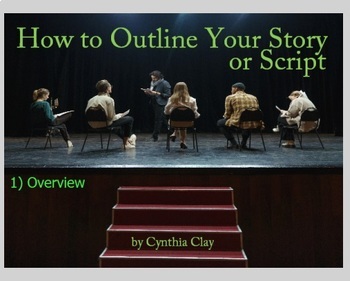
Outline Your Story or Script, Plot.1
Part One, the Overview "How to Outline Your Story or Script" defines dramatic structure, plot, and its parts with precision. It introduces characters, settings, and key objects as dynamic elements of plot, and what makes them dynamic.
Subjects:
Grades:
11th - 12th, Higher Education, Adult Education
CCSS:
Also included in: Outline Your Story or Script: The Complete Plot How-to Course
54:08
African American Literature | ELA Professional Development Course
Learn how to teach African American literature in your high school English class. This is a section of a professional development course created by a high school English teacher. Bonus file includes assignments and handouts reviewed in the video screencast, which has a video of the presenter speaking. Supporting file includes Black American poetry unit but not copyrighted literature. Running time: 54 minutes and 8 seconds. This course is not eligible for a professional development certificate u
Subjects:
Grades:
9th - 12th
Types:
CCSS:
Also included in: PD for Secondary ELA Teachers: Easy, Exciting, and Excellent Teaching
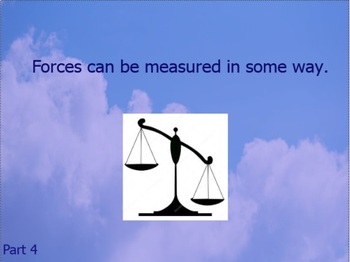
Forces Can Be Measured, Plot.4
Part 4, Forces Can Be Measured explains that since forces can be measured in some way the concept can be carried over to the understanding of characters, settings, and important objects. Characters will have qualities that can be measured, such as a physical ability, mental ability, or different kinds of skills. Settings will have power to either create an atmosphere or mood that affects characters and objects or may have a power such as drawing certain characters to them or locking characters w
Subjects:
Grades:
11th - 12th, Higher Education, Adult Education
CCSS:
Also included in: Outline Your Story or Script: The Complete Plot How-to Course
47:09
The Purpose of Grammar and Syntax | ELA Professional Development Course
Learn how to teach grammar and syntax in your high school English class. This is a section of a professional development course created by a high school English teacher. Bonus file includes assignments and handouts reviewed in the video screencast, which has a video of the presenter speaking. Running time: 47 minutes and 9 seconds. This course is not eligible for a professional development certificate unless your district administration or state approves the hours and completes the certificate f
Subjects:
Grades:
9th - 12th, Staff
Types:
CCSS:
Also included in: PD for Secondary ELA Teachers: Easy, Exciting, and Excellent Teaching
15:00
Poetry and Prosody, Rhythm and Rhyme | ELA Professional Development Course
Learn how to teach poetry and prosody in your high school English class. This is a section of a professional development course created by a high school English teacher. Bonus file includes assignments and handouts reviewed in the video screencast, which has a video of the presenter speaking. Supporting files includes a poetry unit. Running time: 15 minutes. This course is not eligible for a professional development certificate unless your district administration or state approves the hours and
Subjects:
Grades:
9th - 12th
Types:
CCSS:
Also included in: PD for Secondary ELA Teachers: Easy, Exciting, and Excellent Teaching
17:08
Short Fiction and Point of View | ELA Professional Development Course
Learn how to assign a short fiction unit in your high school English class. This is a section of a professional development course created by a high school English teacher. Bonus file includes assignments and handouts reviewed in the video screencast, which has a video of the presenter speaking. File does not include copyrighted short stories. Running time: 17 minutes and 8 seconds. This course is not eligible for a professional development certificate unless your district administration or sta
Subjects:
Grades:
9th - 12th, Staff
Types:
CCSS:
Also included in: PD for Secondary ELA Teachers: Easy, Exciting, and Excellent Teaching

Climax and Falling Action, Plot.7.1
This, the seventh part of How to Outline Your Script or Story, defines the climax in such a way students will be able to accurate find the climax of stories and scripts and create dramatic climaxes themselves. The lesson also details the functions of the falling action: how it ties up loose ends in a way satisfying to readers or audiences and how it provides closure to a story or script. Students will be able to identify the falling action in stories and scripts as well as create satisfying fall
Subjects:
Grades:
11th - 12th, Higher Education
Types:
CCSS:
Also included in: Outline Your Story or Script: The Complete Plot How-to Course
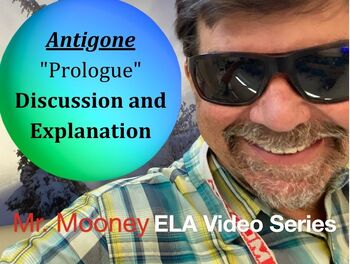
VIDEO - Antigone Prologue discussion and explication
This 8 1/2 minute video is the first in a series of videos for classroom use on Antigone. Mr. Mooney walks the students through the Prologue of Antigone step by step. An optional writing or reading assignment is at the end.Imperative that you download this free script version of Antigone. It's 41 (entire play) pages, but may be worth your while to print out so students can annotate.Great sub plan!
Subjects:
Grades:
9th - 12th
Types:
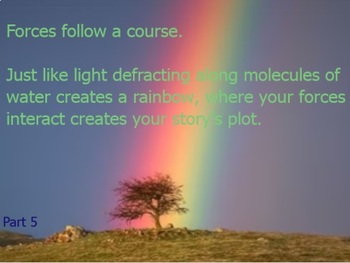
Forces Follow a Course, Plot.5
Part 5, Forces Follow a Course details how to establish a theme by choosing the setting for the beginning and the setting for the ending or your story or script. It explains how settings have meaning and gives examples of how you can create themes from your choice of opening and ending settings.
Subjects:
Grades:
11th - 12th, Higher Education, Adult Education
CCSS:
Also included in: Outline Your Story or Script: The Complete Plot How-to Course
11:24
Teaching Poetry In Action: Pairing with Dystopian Texts
Poetry is one of the most powerful supplementary texts available to teachers and also one of the most nerve-wracking and frightening things to teach. In this video, I share a combination of techniques: the Big Six analysis tool, pairing poetry with Essential Question based and genre-based units to help teachers feel confident teaching poetry.The poem we walk through in this video is called "Prayer for the Mutilated World" by poet Sam Sax. I will share with you exactly how I'd teach it to stud
Subjects:
Grades:
9th - 12th
CCSS:
Also included in: Dystopian Literature: Mega Bundle of All Resources

Frankenstein Video Lectures (Entire Novel)
This is a bundled resource that includes three video lectures covering the entirety of Frankenstein. Topics include: nature; the novel's structure; male vs. female relationships; mothers, orphans, pregnancy; Victor's sexuality; the development of the creature; justice; and others. Each video is about 25-30 minutes long. You can buy these resources separately if you choose. This bundle (and separate resources) will also be available as PowerPoint files.
Subjects:
Grades:
9th - 12th, Higher Education, Adult Education
Types:
CCSS:
29:05
Frankenstein, Volume 3 Lecture
In this 30-minute lecture, the third volume (Chapters 18-25) of Frankenstein is discussed. Topics include: Victor's sexuality; homosocial bonding; metaphorical rape, or the murder of Elizabeth and destruction of the female monster; justice, or lack thereof; unreliable narrators and the structure of the novel. While some direct arguments are made, the intent of the video is to present several ideas to students and encourage them to build their own arguments with evidence (some provided) and/or us
Subjects:
Grades:
9th - 12th, Higher Education, Adult Education
CCSS:
Also included in: Frankenstein Video Lectures (Entire Novel)
24:56
Frankenstein, Volume 2 Lecture
In this 25-minute lecture, the second volume (Chapters 9-17) of Frankenstein is discussed. Topics include: the frame story; the creature's ability to learn and use of language; how nature, violence, and art play into our understanding of humanity; beauty, ugliness, and the body; and Victor and the De Laceys. While some direct arguments are made, the intent of the video is to present several ideas to students and encourage them to build their own arguments with evidence (some provided) and/or use
Subjects:
Grades:
9th - 12th, Higher Education, Adult Education
Types:
CCSS:
Also included in: Frankenstein Video Lectures (Entire Novel)

Analyzing Mood: Three Skeleton Key Trailer
Get your students in the MOOD for reading the classic thriller, "Three Skeleton Key," with this spooky story trailer. The trailer can be used in conjunction with my close reading unit "Analyzing Mood: Three Skeleton Key" which is available for sale in my TPT store. The story is perfect for teaching students students how to analyze an author's choices, and support inferences with text evidence, and study literary elements such as foreshadowing, mood, diction, and voice.
Subjects:
Grades:
8th - 11th
Showing 1-24 of 32 results

